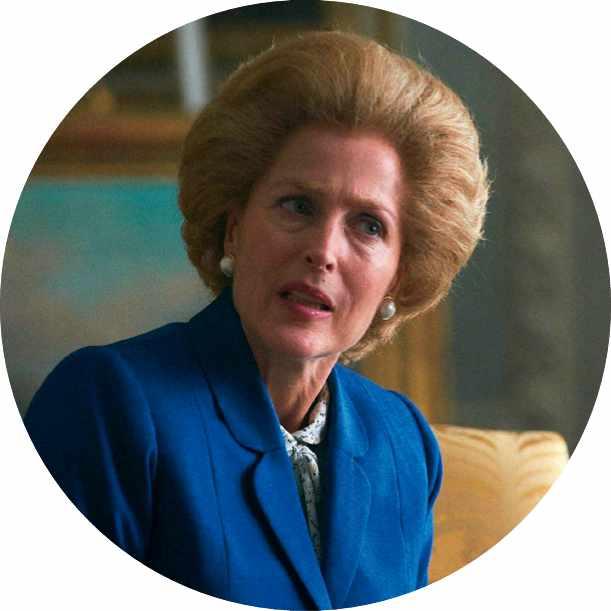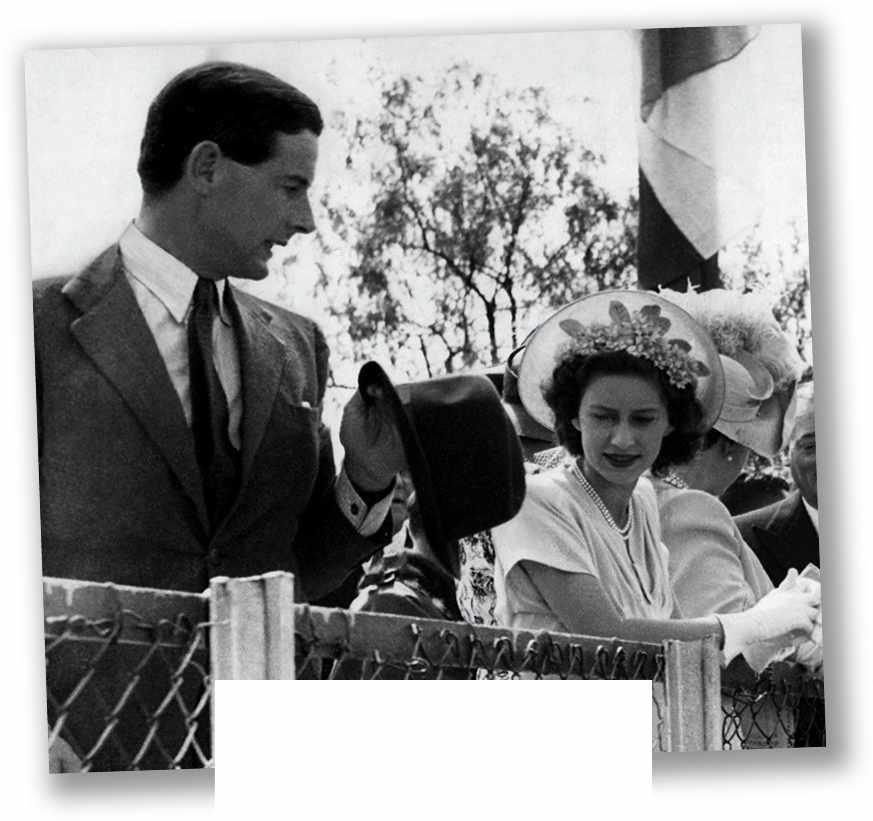
9 minute read
The Crown sensation
The Crown: small screen, big drama
Ted Powell interrogates the accuracy of the historical Netflix television series, a lavish royal soap that follows the politics and drama of the reign of Elizabeth II amid events that shaped the second half of the 20th century
The Crown (Creator: Peter Morgan)
With Claire Foy, Matt Smith, John Lithgow, Olivia Colman, Tobias Menzies
he Crown has enjoyed
Tworldwide success since the release of the first season in 2016, with three more seasons now available and a fifth due in 2022. The first deals with the period from the Queen’s wedding in 1947 up to 1955 – an era yielding rich historical material: Elizabeth’s marriage to Philip; the illness and death of King George VI; her accession to the throne in 1952; Winston Churchill’s final stint as prime minister; and Princess Margaret’s relationship with Peter Townsend. Season two covers the years from 1956 to 1964. In a comparatively uneventful time in the private lives of the royal family, much is made of the supposed marital difficulties between the Queen and Prince Philip, as well as Margaret’s romance with and marriage to Antony Armstrong-Jones.
The third season pushes on to 1977, developing Prince Charles and Princess Anne as adult characters. There’s no overarching theme, though Harold Wilson’s prime ministerial career figures prominently. Most of the episodes are self-contained, dealing with, for example, Prince Philip’s mother; Princess Margaret’s 1965 tour of the USA; the Aberfan tragedy in 1966; and Charles’s investiture as Prince of Wales in 1969. Season four, by contrast, is dominated by the story of Princess Diana and incidents from Margaret Thatcher’s premiership. A fifth season, taking the story further into the 1990s, is eagerly awaited.
The Crown’s portrayal of royal life certainly makes good television drama. But how true is it to historical fact? Like The Godfather, The Crown begins with a wedding. The ailing don (George VI) is about to marry off his daughter to a young upstart (Philip) eager to muscle in on the family business. In the next episode, the old don dies, and the matriarch (Queen Mary) warns the new head of the family (Elizabeth) that she must put aside her old life in the name of duty. Like Michael Corleone, she must assume a new identity: Elizabeth Mountbatten has been replaced by Elizabeth Regina. The hard-bitten family consigliere (Winston Churchill) acknowledges the new boss by the kissing of hands.
Far-fetched or not (and Peter Morgan, writer of The Crown, has acknowledged his debt to The Godfather), the comparison reminds us that we are dealing with drama, not history – entertainment that plays upon our enduring fascination with royalty. What are these people like
The first episode of The Crown opens with the wedding of Philip Mountbatten (Matt Smith) to Princess Elizabeth (Claire Foy), with Ely Cathedral standing in for Westminster Abbey
behind closed doors? What price do they pay for the privileged lives they lead? Thoroughly researched, beautifully written and superbly acted, The Crown is nonetheless historical soap opera, not documentary. Some have expressed concern that its impact is so powerful that it crowds out the historical record.

ontroversy has raged over the series’
Chistorical accuracy. The distinguished royal expert Hugo Vickers has pointed out numerous factual errors – some minor, others major – and has been particularly critical of the way in which The Crown mixes fact and fiction for dramatic effect. In response, Robert Lacey, one of the advisers to the series, has vigorously defended its authenticity.
Imaginary scenes and characters appear throughout the series. In season one, an entire episode is devoted to a fictionalised account of the great London smog of 1952, in which one of Churchill’s secretaries is knocked down and killed by a bus – an invented character and a fabricated incident. In a later episode, the Queen hires a (fictional) tutor to fill the gaps in her education. Tabloid rumours about tensions within the royal family are spun into major storylines. Prince Philip’s visit to Australia and the South Pacific in 1956 is made to appear like a fivemonth stag party, threatening the breakdown of his marriage to the Queen. Season three opens in 1964 with an imaginary scene in which the Queen, now played by Olivia Colman, is feeling her age. To emphasise the point, she describes herself as “an old bat” – yet in fact she was only 38 years old and had just given birth to her fourth child, Prince Edward.
All dramas need a sinister villain. In the first two seasons that role is approximated by the hapless Duke of Windsor, the former Edward VIII, who is portrayed as a wicked uncle to rival Richard III. Indeed, in the second season he is condemned as a Nazi agent, having allegedly schemed with Hitler’s high command to depose his brother, George VI, and return to the throne.

David (Alex Jennings), the former King Edward VIII, is cast as one of the villains of the piece in the first two seasons
The unhappy marriage of Princess Diana (Emma Corrin) and Prince Charles (Josh O’Connor) provides the focus of season four
Edward did indeed mix with dubious company, but to allege that by leaking information he was somehow responsible for the fall of Paris to the Germans in 1940 stretches the bounds of credulity. By season four, virtually all members of the royal family are cast as villains, tormenting poor Diana into a state of bulimic misery.

he addition of fictional material is one T contentious aspect, but the historical record can also be distorted by what is left out. Arguably the most glaring omission in The Crown is that we rarely see the Queen or her family at work – doing what they do day in, day out. The royal family carries out thousands of public engagements every year. Some 500 of those are undertaken by Prince Charles and Princess Anne, the busiest royals, but in 2019 the Queen – aged 93 – carried out nearly 300. What do we see of the Duke of Edinburgh’s Award scheme, the Prince’s Trust, the countless investitures, the garden parties, the opening of parliament, or the Queen presiding at the Commonwealth Heads of Government Meetings across the world? Rather humdrum material, perhaps, but this is the essential role of the modern royal family – it is how they justify their existence.
Arguably those themes would make for dull television, but there are also many true storylines that could have added real drama to the series – an account of Prince Andrew’s stint in the Royal Navy during the Falklands War, for example. In 1982, Andrew saw active service as a helicopter pilot aboard the aircraft carrier HMS Invincible in the south Atlantic. There were real concerns that his life might be in danger. In fact, the Ministry of Defence attempted to get him transferred to a desk job in Whitehall, but the Queen insisted that he remained with Invincible. This would have made a dramatic counterpoint to the story (included in The Crown) of how Margaret Thatcher’s son Mark got lost in the Sahara while competing in the Paris–Dakar Rally that year. True, Andrew does make a brief appearance as a pilot – but only to arrive in his helicopter for lunch with the Queen, at which he tells her about the film in which his “young, racy” girlfriend starred.
Similarly, no references are made to Princess Anne’s distinguished career as an international equestrian. She competed for Great Britain in the Montreal Olympics in
Season two of The Crown sees Claire Foy’s Elizabeth facing marital and family turmoil

The Queen (Olivia Colman) visits Aberfan after the 1966 disaster that claimed 144 lives. She’s depicted as emotionally stunted


1976, where she suffered a dramatic fall from her horse in the three-day event but remounted to complete the course. She is now president of the British Olympic Association and a member of the International Olympic Committee.
The drama in The Crown derives from the interplay between the lives of the protagonists and the constraints placed upon them by membership of the House of Windsor. Nearly all of the main characters are in some way damaged or thwarted by their royal status. George VI is driven to an early grave by his unexpected accession to the throne following the abdication of his brother. Philip seethes with frustrated ambition. The lovelorn Charles pines for a woman he cannot marry. Diana finds herself trapped in the suffocating solitude of a loveless marriage.
The portrayal of Elizabeth herself – the central figure in the drama – is a bit more nuanced. In the first two seasons the young Queen, convincingly played by Claire Foy, seems to rise above the pressures of her role, dutifully subordinating her private life to her responsibilities as sovereign. In seasons three and four, however, the middleaged Queen reveals the toll that her devotion to duty has taken: she is emotionally stunted, unable to shed a tear or to show affection to her children.
To illustrate Elizabeth’s supposed emotional inadequacy, The Crown uses the tragedy of Aberfan where,
making a belated visit to the disaster area, the Queen remains dry-eyed in the face of devastating suffering – a portrayal contradicted by those who were there, who confirmed that she was reduced to tears. She did indeed wait a few days before visiting the scene, but only from a concern that her presence might create a distraction from the rescue work. In reality, there is no need to resort to pop psychology to explain the Queen’s Margaret Thatcher (Gillian Anderson) emotional restraint in public. She attempts to navigate royal protocols belongs to the stoical wartime generation in season four of The Crown taught to maintain a stiff upper lip, to “keep calm and carry on”. It is also likely that the Queen is trying to preserve the few shreds of privacy in her family life remaining after a lifetime of media intrusion. Though it tries hard, in the end The Crown fails to make the Queen interesting. Paradoxically, the series succeeds most as history when it fails as drama – when it gives us a true representation of the Queen, showing her not as a soap opera monarch but as she really is: an ordinary woman in an extraordinary situation. The other characters interest us because they are flawed – their weaknesses and failures are the aspects that fascinate us. Elizabeth, on the other hand, endures. She may not be flawless, but she never flinches from her duty, instead fulfilling with utter conviction the vow that she made on her 21st birthday: “My whole life, whether it be long or short, shall be devoted to your service.” n










